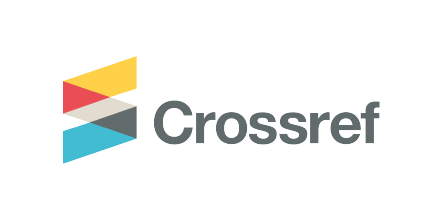PECS vs. iPad Intervention for Students with Autism Spectrum Disorders: A Literature Review
DOI:
https://doi.org/10.21776/ub.ijds.2020.007.02.09Keywords:
Autism Spectrum Disorders, PECS, iPad, communication interventionAbstract
Autism Spectrum Disorders (ASD) refers to a neurodevelopmental disorder that affects communication, behaviour and socialization of the individuals diagnosed with ASD. In children, ASD is considered as a high incidence disability since it affects one in eight children. In regard to functional communication skills of the children, effective augmentative or alternative communication process and device is highly important to facilitate positive outcomes. Both Picture Exchange Communication System (PECS) and the iPad with its communication applications are considered emerging treatment children with autism spectrum disorders (ASD). The purpose of this literature review is to compare the effectiveness of low tech intervention (through the utilization of PECS) and high tech intervention (through the utisation of iPad). The study was conducted by selecting electronic articles from several databases which were published between 2008-2018. The findings show that PECS is highly effective for increasing intentional communication skills and independence in requesting and making decisions as well as beneficial for non-English speakers. Meanwhile, iPad-based intervention is beneficial to solve children's literacy problems, to reduce stressors during interventions, and to increase the children's effective intra-verbal responses. It is then suggested that teachers, parents and care givers employ the combination of both low tech and high tech interventions as combining the two will lead to better outcomes.
References
Achmadi, D., Sigafoos, J., van der Meer, L., Sutherland, D., Lancioni, G. E., O'Reilly, M. F., Hodis, F., & green, V. A. (2014). Acquisition, preference, and follow-up data on the use of three AAC options by four boys with developmental disability/delay. Journal of Developmental and Physical Disabilities, 26(2014), 565-583. doi:10.1007/s10882-014-9379-z.
Agius, M. M., & Vance, M. (2016). A comparison of PECS and iPad to teach requesting to pre-schoolers with autistic spectrum disorders. Augmentative and Alternative Communication, 32(1), 58-68. doi: 10.3109/07434618.2015.1108363. http://dx.doi.org/10.3109/07434618.2015.1108363.
American Psychiatric Association. (2013). Diagnostic and Statistical Manual of Mental Disorders: DSM-5 (5th ed.). Washington, D. C.: American Psychiatry Association.
Apple. (2011). iPad technical Specifications. Retrieved from http://www.apple.com/ipad/specs.
Beck, A. R., Stoner, J. B., Bock, S. J., &Parton, T. (2008). Comparison of PECS and the use of a VOCA: A replication. Education and Training in Developmental Disabilities, 43(2), 198-216. http://www.jstor.org/stable/23879930.
Buotot, E. A., & Myles, B. S. (2011). Autism spectrum disorder: Foundations, characteristics, and effective strategies. Upper Saddle River, NJ: Pearson Education.
Center for Disease Control and Prevention (2012). Autism and Developmental Disabilities Monitoring (ADDM) Network. Retrieved from http://www.cdc.gov/ncbddd/autism/addm.html.
Clark, M.L., Austin, D. A., and Crake, M. J. (2015). Professional and parental attitudes toward iPad application use in autism spectrum disorder. Focus on Autism and Other Developmental Disabilities, 30(3), 174-181. doi: 10.1177/1088357614537353 focus.sagepub.com.
Conklin, C. G. & Mayer, G. R. (2011). Effects of implementing the Picture Exchange Communication System (PECS) with adults with developmental disabilities and severe communication deficits. Remedial and Special Education, 32(2) 155-166. doi: 10.1177/0741932510361268 http://rase.sagepub.com
Frost, L., &Bondy, A. S. (2009). The Picture Exchange Communication System: Clinical and research applications. In P. Mirenda& T. Iacono (Eds.), Autism spectrum disorders and AAC (pp.279-302). Baltimore: Paul H. Brookes Publishing Co.
Ganz, J. B., Simpson, R. L. & Lund, E. M. (2012). The Picture Exchange Communication System (PECS): A promising method for improving communication skills of learners with autism spectrum disorders. Education and Training in Autism and Developmental Disabilities, 47(2), 176-186. http://www.jstor.org/stable/23880098.
Gevarter, C., O-Reilly, M. F., Rojeski, L., Sammarco, M., Sigafoos, J., Lancioni, G. E., & Lang, R. (2014). Comparing acquisition of AAC-based mands in three young children with autism spectrum disorder using iPadapplications with different display and design elements. Journal of Autism Developmental Disorder, 44(2014), 2464-2474. doi:10.1007/s10803-014-2115-9.
Grandin, T. (2011). The way I see it: A personal look at autism and Asperger's. Arlington, TX: Future Horizons.
Hill, D. A., & Flores, M. M. (2014). Comparing the Picture Exchange Communication System and the iPad for communication of students with autism spectrum disorder and developmental delay. TechTrends, 58(3), 45-53.
Howlin, P., Gordon, R. K., Pasco, G., Wade, A., &Charman, T. (2008). The effectiveness of Picture Exchange Communication System (PECS) training for teachers of children with autism: a pragmatic, group randomized controlled trial. Journal of Child Psychology and Psychiatry, 48(5), 473-481.
Lerna, A., Esposito, D., Conson, M., Russo, L. & Massage, A. (2012). Social' communicative effects of the Picture Exchange Communication System (PECS) in autism spectrum disorders. International Journal of Language and Communication Disorders, 47(5), 609-617. doi: 10.1111/j.1460-6984.2012.00172.x.
Lorah, E. R., Tincani, M., Hickey, A., Dodge, J., Gilroy, S., &Hantula, D. (2013). Evaluating picture exchange and the iPad as a speech Generating device to teach communication to young children with autism. Journal of Developmental and Physical Disabilities, 25(6), 637-649. doi: 10.1007/s10882-013-9337-1. https//www. researchgate.net/publication/257586535.
Lorah, E. R., Karnes, A., & Speight, D. R. (2015). The acquisition of intraverbal responding using a speech generating device in school age children with autism. Journal of Developmental and Physical Disabilities, 27(2015), 557-568. doi:10.1007/s10882-015-9436-2.
Lee, A., Lang, R., Davenport, K., Moore, M., Rispoli,M., van der Meer, L., Carnett, A., Raulston, T., &Tostanoski, A. (2015). Comparison of therapist implemented and iPad-assisted interventions for children with autism. Developmental Neurorehabilitation, 18(2), 97-103. doi: 10.3109/17518423.2013.830231. http://informahealthcare.com/pdr.
McNaughton, D., & Light, J. (2013). The iPad and mobile technology revolution: benefits and challenges for individuals who require augmentative and alternative communication. Augmentative and Alternative Communication, 29(2), 107-116. doi: 10.3109/07434618.2013.784930.
National Autism Center. (2009). Evidence-based practice and autism in the schools: A guide to providing interventions to students with autism spectrum disorder. Randolph, MA: National Autism Center.
Spooner, F., Ahlgrim-Delzell, L., Kemp-Inman, A. & and Wood, L. A. (2014). Using an iPad2 ® with systematic instruction to teach shared stories for elementary-aged students with autism. Research and Practice for Persons with Severe Disabilities, 39(1), 30-46. doi: 10.1177/1540796914534631. sagepub.com/journalsPermissions.nav.
Sulzer-Azaroff, B., Hoffman, A. O., Horton, C. B., Bondy, A., & Frost, L. (2009). The Picture Exchange Communication System (PECS): What do the data say?.Focus on Autism and Other Developmental Disabilities, 24(2), 89-103. doi: 10.1177/1088357609332743. http://focus.sagepub.com.
Travis, J. & Geiger, M. (2010). The effectiveness of the Picture Exchange Communication System (PECS) for children with autism spectrum disorder (ASD): A South African pilot study. Child Language Teaching and Therapy, 26(1), 39-59. doi: 10.1177/0265659009349971. http://clt.sagepub.com.
Van der Meer, L., Didden, R., Sutherland, D., O-Reilly, M. F., Lancioni, G. E., &Sigafoos, J. (2012). Comparing three augmentative and alternative communication modes for children with developmental disabilities. Journal of Developmental and Physical Disabilities, 24(2012), 451-468. doi: 10.1007/s10882-012-9283-3.
Downloads
Published
How to Cite
Issue
Section
License
Copyright (c) 2020 Toni Ariwijaya

This work is licensed under a Creative Commons Attribution-NonCommercial 4.0 International License.















